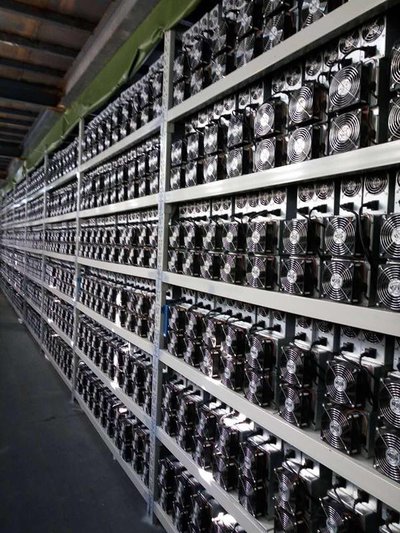In Europe’s rapidly evolving cryptocurrency landscape, Bitcoin mining has transcended hobbyist ambitions, emerging as a sophisticated industrial pursuit. The rise of mining farms across the continent highlights a strategic embrace of digital assets, with mining machine hosting becoming a pivotal solution for individuals and companies keen to leverage this lucrative domain. But what exactly distinguishes various hosting providers in terms of costs and returns on investment (ROI)? How do operational expenses, electricity pricing, and efficiency impact the bottom line in this competitive market? Exploring these nuances reveals much about the intricate ecosystem underpinning European Bitcoin mining ventures.
The heart of any mining operation is, undoubtedly, the miner itself. These machines—whether cutting-edge ASIC rigs optimized exclusively for Bitcoin or versatile GPUs adaptable to multiple cryptocurrencies—dictate the scale and success of mining enterprises. European hosting companies cater to diverse client requirements by offering tailored environments that focus on optimal cooling, network stability, and consistent power supply. From the Arctic-chilled vaults in Scandinavia to the industrial parks in Eastern Europe, this geographical diversity influences mining rig performance and operational costs, underscoring why regional analysis is vital.

Electricity pricing remains a linchpin in determining profitability. Regions such as Iceland and Norway boast abundantly cheap and renewable energy sources, enabling miners to curb expenditures drastically—a stark contrast to Central Europe’s comparatively steep tariffs. While the initial capital expenditure in acquiring top-tier mining machines like the latest-generation Bitcoin miners might seem daunting, the hosted mining model alleviates burdens such as maintenance and facility management, granting miners the capability to focus on scaling their digital asset portfolios. Calculating ROI for hosted mining must factor in these energy cost variances alongside hardware depreciation schedules and anticipated cryptocurrency price fluctuations, which add layers of complexity seldom seen in traditional investment arenas.
Of course, Bitcoin is not the solitary mining target occupying energy grids and warehouses. Ethereum mining, though transitioning toward proof-of-stake, still relies on extensive mining rigs engineered for maximal hash rates, underscoring the ongoing demand for powerful GPUs within hosted facilities. Moreover, altcoins like Dogecoin, with its quirky meme-inspired identity, ride on the coattails of Bitcoin’s infrastructural groundwork, leveraging merged mining opportunities. Such multi-coin strategies facilitated by hosting services diversify income streams and hedge against volatility, an indispensable tactic in volatile crypto markets.

The interplay between mining farms and exchanges introduces yet another dimension to the economic calculus. Selecting an exchange with efficient withdrawal mechanisms, low fees, and reliable liquidity can dramatically influence the realized gains from mined coins. European miners often juggle considerations over whether to sell mined coins immediately or hold them strategically, a choice sharpened by local regulatory climates and taxation frameworks. Additionally, hosting providers sometimes extend value-added services, including integrated wallets and direct exchange interfaces, smoothing the transition from mined asset to liquid capital.
Emerging trends in mining machine innovation further reshape cost and ROI analyses. Advanced cooling technologies, ranging from immersion cooling to AI-driven thermal monitoring, enhance hardware lifespan and efficiency, crucial for sustaining margins in a zero-sum game against rising global difficulty rates. The relentless march of Bitcoin’s halving events—slashing block rewards—compels miners and hosts alike to continually optimize operational performance and identify cost-saving avenues. This dynamic market environment underscores mining machine hosting in Europe not merely as a static service but a multifaceted strategic partnership between clients and providers.
Amid these technical and economic variables, environmental considerations are increasingly influencing investment decisions. European markets, sensitive to sustainability narratives and regulatory scrutiny, favor hosting models powered by renewable energy. Initiatives incorporating solar, hydroelectric, or wind energy sources align with European Union carbon reduction goals and help mining farms attract ethically conscious investors. This green pivot, while sometimes inflating upfront costs, serves as a safeguard against potential future compliance penalties and offers long-term ROI benefits.
In summary, evaluating Bitcoin mining hosting in Europe demands a holistic approach encompassing miner specifications, energy pricing, geographic advantages, and market conditions alongside future-proofing strategies addressing environmental sustainability and evolving regulatory landscapes. For investors navigating this complex mosaic, partnering with seasoned hosting providers who integrate technical excellence with operational transparency can mark the difference between modest returns and substantial profitability in the enthralling world of cryptocurrency mining.
This article delves into the intricacies of Bitcoin mining hosting across Europe, meticulously analyzing cost structures and potential ROI. It highlights regional disparities, energy efficiencies, and regulatory environments, offering invaluable insights for investors. A must-read for those navigating the evolving landscape of cryptocurrency mining.